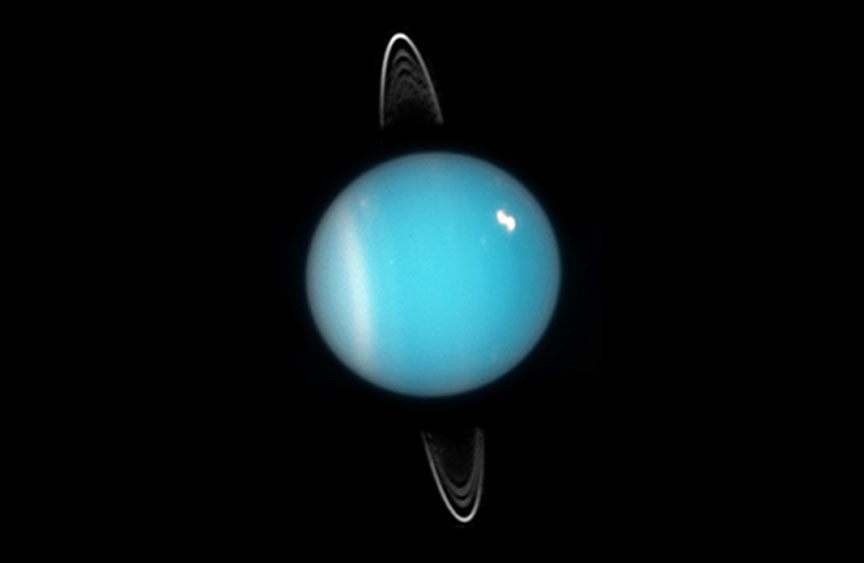From - Sky & Telescope,
By - Elise Cutts,
Edited by - Amal Udawatta,

In 2005 astronomers used the Hubble Space Telescope to photograph the delicate ring system of Uranus, as well as a southern collar of clouds and a bright, discrete cloud in the northern hemisphere.
NASA / ESA / M. Showalter (SETI Institute)New research shows diamonds might condense out of Neptune’s mantle, but not Uranus’, explaining a decades-old discrepancy.
Below the frosty hydrogen-helium atmospheres of Neptune and Uranus lie fluid mantles rich in water, ammonia, methane, and possibly something far more dazzling: diamonds. Scientists have long suspected these dense gems might rain out of the ice giants’ mantles and into their rocky cores.
However, Uranus’ interior might not be as glitzy as previously thought. Theoretical results published February 27th in Nature Communications suggest that while ideal diamond-forming conditions could occur within Neptune’s mantle, they might not exist on Uranus. But the ice giants’ interiors are still so mysterious that confidently forecasting diamond drizzles on either world will have to wait for future missions to the outer solar system, other researchers say.
“Planets with the mass of Uranus and Neptune seem to be quite common in the in the galaxy,” says Ravit Helled (University of Zurich), who wasn’t involved in the study. Understanding what goes on inside the ice giants, she adds, is “very important for the characterization of exoplanets, as well as our understanding of our own origin.”
DIAMONDS IN THE SKY?
After the Voyager 2 flybys in the 1980s, scientists noticed that Neptune glows with its own internal heat, while Uranus only throws back the energy it receives from the Sun. They’ve been struggling to explain the difference ever since.
“The name of the game for these planets for the past [decades] has been trying to think about why are they actually different, because they look so similar,” says Jonathan Fortney (University of California, Santa Cruz), who also wasn’t involved in the study.
The new study, led by Bingqing Cheng (Institute of Science And Technology Austria), suggests that diamond rain could be a piece of this puzzle. As the gemstones fall through the mantle, they would release gravitational energy as heat. Although less dramatic than an asteroid burning up in our atmosphere, the principle is similar. Meteorites (or diamonds) rub against whatever medium they’re falling through, and this friction releases heat.
When Cheng’s team calculated the “freezing point” of carbon under conditions like those within Neptune and Uranus, they discovered that there’s a narrow band of temperatures and pressures ideal for forming diamonds. Under these conditions, carbon and hydrogen separate from one another, concentrating carbon into a carbon-rich fluid that’s perfect for forming diamonds. This concentrated fluid can freeze out as diamond rain.
Cheng and colleagues suggest that while this diamond weather is possible on Neptune, the conditions aren’t right for it on Uranus. If true, this could help explain the planet’s mysteriously dim glow compared to its farther-out sibling.
Comments
Post a Comment